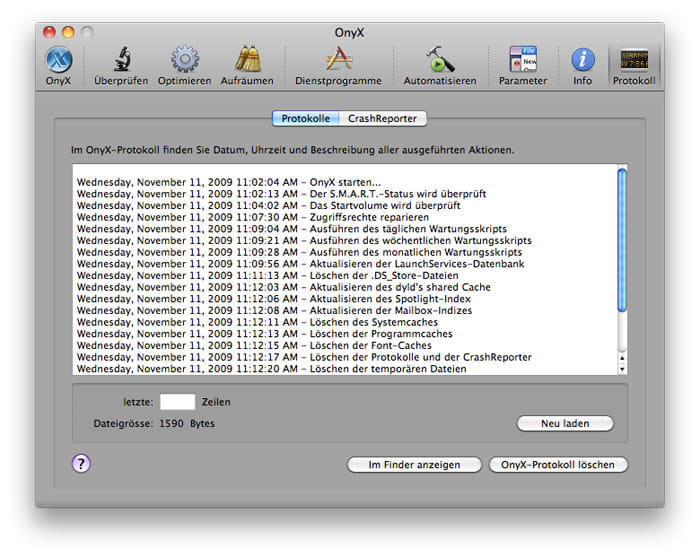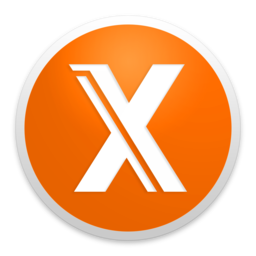

- #ONYX FOR MAC 10.3.6 HOW TO#
- #ONYX FOR MAC 10.3.6 INSTALL#
- #ONYX FOR MAC 10.3.6 UPDATE#
- #ONYX FOR MAC 10.3.6 PRO#
Firmware updates are quite common in beta-releases of macOS, and a good reason for your Mac having a higher major version than that listed. This doesn’t make the lists wrong, nor does it necessarily make your Mac’s firmware wrong. Your major version may be higher for several reasons, as explained above. The list above is based on the EFI firmware updates which are bundled in the latest macOS updates (standalone delta version). Is the list above wrong, as my Mac has a higher major version number than that shown? However, B00 doesn’t guarantee that they will be supported by 10.14. Models which now have the 00B minor version number instead are older, and include those which are unlikely to be supported by Mojave. Generally speaking, the minor version should be B00 on all more recent Mac models, including those which will be supported by Mojave. This implies that Apple is no longer using it sequentially, but as an indicator. Since then, only two values have been seen: B00 and 00B. What about the minor version number (B00 or 00B)?Īpple used to use the minor version number as part of the numbering system, until High Sierra. Consider upgrading to High Sierra or later as appropriate.ĮFI firmware updaters are now only distributed as part of macOS / OS X updates and upgrades: Apple does not provide them separately.
#ONYX FOR MAC 10.3.6 INSTALL#
If the installed version of EFI firmware has a major version which is lower than that shown, and you are running a recent version of macOS such as Sierra or later, download and install the last Combo updater and all subsequent Security Updates for the version of macOS which it is running, from Apple Support. You should be able to check that in High Sierra and above: see below for instructions.

That is a higher number and thus more recent than 010F.B25, as the major version is greater, even though the minor version is lower. So in that case, the major version is 0151 (337 decimal), and the minor version is B00 (2816). The firmware version is then given in hexadecimal, with the major version first, followed by the minor version. In that, IM171 is the model identifier, here iMac17,1. In the Hardware Overview listing, this is given as the Boot ROM Version, and typically looks like Use the About This Mac command at the top of the Apple menu, and click on the System Report… button.
#ONYX FOR MAC 10.3.6 HOW TO#
How to check your Mac’s EFI firmware version
#ONYX FOR MAC 10.3.6 PRO#
The iMac Pro and 2018 MacBook Pro with Touch Bar (MacBookPro15,1 and 15,2) use a different mechanism for firmware updates, managed by their T2 chips. See below for further information about this model.
#ONYX FOR MAC 10.3.6 UPDATE#
⚠️ Apple doesn’t list the MacPro5,1, but this is believed to be 0085 B00 following 10.13.4, and should change to 0089 B00 following update to 10.13.6. ⚠️ Apple doesn’t list the MacBookPro11,3, but this appears to have the same version as the MacBookPro11,1.

Although 10.13.6 and 10.14 update the iMac16,1, they don’t update the iMac16,2. ⚠️ Apple doesn’t list the iMac12,2 separately, but this appears to have the same version as the iMac12,1. The numbers given below apply to Macs which haven’t undergone that update. I will shortly be detailing those new version numbers in another article. Note that applying the update to macOS 10.14.1, or the Security Updates to High Sierra (2018-002) or Sierra (2018-005) install EFI firmware which uses a completely different version numbering system. However, the following lists give the EFI firmware versions supported in the last High Sierra update (10.13.6) and in the initial release of Mojave (10.14). It is no longer updated: for current information, see this article instead.Īpple doesn’t provide an official list of the current EFI firmware versions which should be installed on each model of Mac. This article refers to previous EFI firmware versions, not the latest ones.


 0 kommentar(er)
0 kommentar(er)
